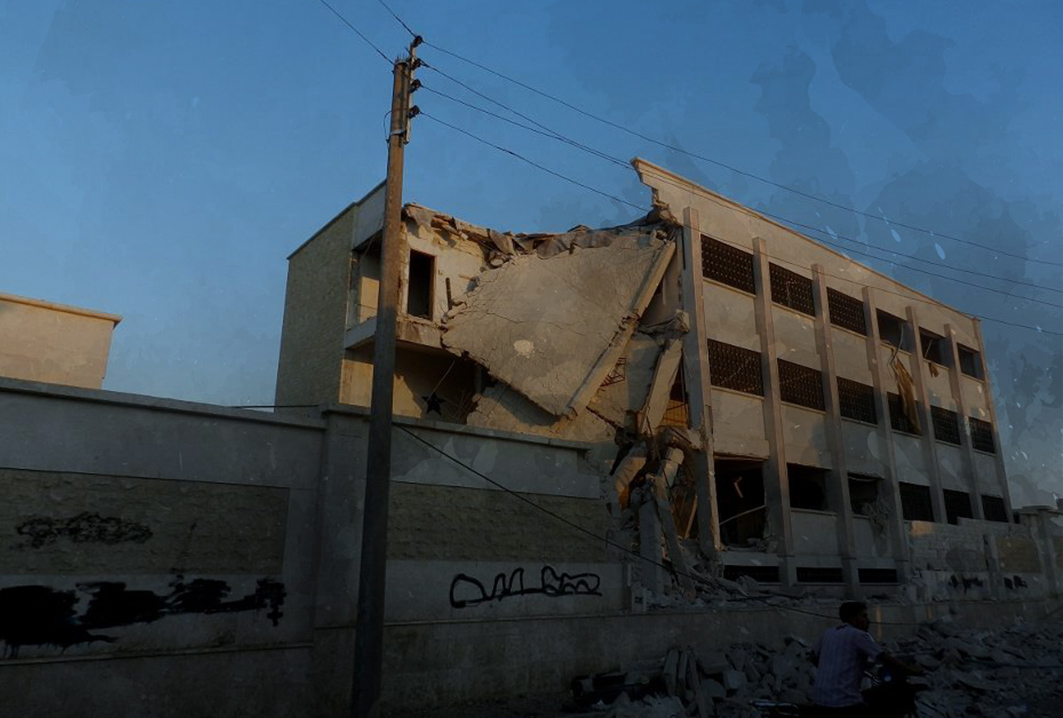After the province of Deir Ezzor was taken out of ISIS control, two main forces took control of the province: The Syrian Democratic Forces (SDF) which controls the north of the Euphrates River and the Syrian government forces which controls the south of the Euphrates River.
This report sheds light on the situation of education in Deir Ezzor province, after the expulsion of ISIS.
1- Education in Syrian government-held areas:
There is a critical situation with respect to teaching staff, school buildings as well as students. There is an estimated 47 schools officially operating in Syrian government-held areas that have an approximate population of 700,000 -the number is constantly changing. Education in the Syrian government-held areas faces many challenges such as:
- The bulk of the teaching staff in these schools are “not qualified to teach”, as they were appointed in 2012 with five-year contracts, which included baccalaureate holders without having university degrees or diplomas that qualify them to teach and many of them were appointed through favoritism.
- Many schools inside al-Qusour and al-Joura neighborhoods have altered to function as military and security barracks, some of them as IDPs shelters.
- The number of schools in populated neighborhoods in Deir Ezzor does not exceed 5 schools. This has created a real crisis in classrooms’ accommodation capacity, as the number of students exceeded 70 in each classroom, making education under these circumstances more challenging.
2- Education in SDF-held areas:
After SDF took full control of most of the northern bank of the Euphrates River, and after the return of the population to some of these areas, Education has become a top priority in Deir Ezzor. Teachers were quick to rely on themselves to revive the educational process after a break of four years. In the town of al-Shuhail, east of Deir Ezzor, teachers worked to rehabilitate the schools in the town. They managed to rehabilitate 5 schools, which have received hundreds of children over the past two months.
3- Education in the SDF-held areas faces many challenges such as:
- Most school buildings were destroyed.
- The lack of school supplies and essentials tools (student seats, blackboards …etc.) has affected the way students receive their lessons, and students are obliged to sit on the ground in schools’ courtyards.
- Lack of school curricula, so teachers rely on their experience in teaching; as their main focus now is on rehabilitating children through the eradication of illiteracy.
- Teachers do not receive any tuition fees or salaries, as they do their work voluntarily. Promises have been made by (UNICEF) to secure teachers’ salaries for more than a month, but it has not fulfilled this until now. This poses a real threat to the continuation of education in the province, as teacher sooner or later will stop voluntary teaching and will resort to other fields that ensures receiving money necessary for their survival.
- Generations in Deir Ezzor are threatened by illiteracy due to students’ dropout from schools for several years, and because, at present time, there is no environment conducive to the progress of education, amid local and international indifference to the seriousness of this situation, which threatens the whole society.
- Priorities in education sector:
- Rehabilitation of destroyed schools, and provision of school supplies such as seats, blackboards, in addition to improving water and sanitation in Syrian schools.
- Support issuing a unified curriculum in all schools, and further support children who dropped out of schools to catch up with information they had missed.
- Secure teachers’ salaries by putting pressure on the concerned organizations (UNICEF) to ensure the continuation of education process.
- Restore schools that were used as military barracks and shelters, and find suitable places for accommodating IDPs other than schools.
- Review the latest official appointment of teachers, as only well qualified teachers should be authorized to teach in order to improve the educational process.

